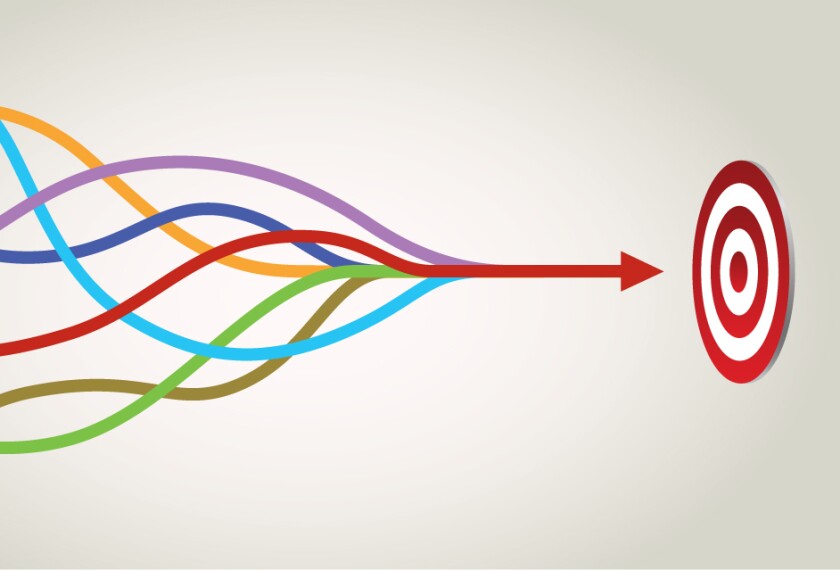There’s a lot of enthusiasm for social and emotional learning. Indeed, district spending on SEL increased by nearly 50 percent between the 2019-20 and 2020-21 school years. There’s a crying need for that kind of mentoring and support, especially after the disruptions of the past year and half, and it’s likely that some of the COVID-19 relief funds—still largely unspent—will get funneled toward this cause.
I get it. As I’ve written with Tim Shriver, chair of the Collaborative for Academic, Social, and Emotional Learning (CASEL), SEL offers a chance to turn the page on the excesses of an accountability era during which it could feel like the humanity was getting squeezed out of schools.
At the same time, though, I’ve long been apprehensive about what gets promoted in the name of SEL. I’ve cautioned that SEL must not “become an excuse to displace content instruction, burden teachers, or justify dubious pedagogy” and that “I’ve little confidence that schools and systems are equipped to sort the wheat from the chaff” offered up by a “host of vendors, goofballs, and charlatans.”
As it turns out, I’m not alone in my concerns about what SEL can yield in practice. My colleague Robert Pondiscio, author of How the Other Half Learns, recently penned a terrific paper on the perils of SEL and the rise of what he terms “therapeutic education.” At this moment of fierce debate about community values, parental rights, and civilizational norms—a debate that SEL makes extraordinarily concrete for teachers and schools—I thought it worth sharing what he had to say.
Pondiscio points out that “the rise over the past decade of the SEL movement represents a sudden and dramatic expansion of schools’ mission, growing to encompass monitoring, molding, evaluating, and assessing students’ attitudes, values, and beliefs.” Yet, he notes, this has come “without a full and proper examination of its role or a sufficient discussion about its practices or expectations for its effectiveness.”
While SEL adherents take pains to argue that SEL complements and supports academic learning (a claim that depends mightily on context, execution, and all those frustrating particulars), Pondiscio fears that schools’ approach to SEL risks overburdening teachers with responsibilities they aren’t trained for, compromising their ability to build academic skills and yielding too much bad “therapy.” As he puts it, “Regardless of good intent, teachers are not mental-health professionals, counselors, or clergy. They should not be asked—nor is there any reason to expect them—to perform competently in these roles . . . With every new demand or concern placed in the laps of schools and teachers, the likelihood decreases that they will be effective at any of them.”
How did we get here? Pondiscio cites Kathryn Ecclestone and Dennis Hayes’ book, The Dangerous Rise of Therapeutic Education, as a useful discussion of “how ideas and techniques borrowed from popular psychology have aggressively inserted themselves into classroom practice along with the idea that ‘emotional well-being, emotional literacy, and emotional competence are some of the most important outcomes of the education system.’” This leaves Pondiscio wary. He warns: “The tendency to borrow ideas and tactics from therapy carries with it the risk of pathologizing childhood and encouraging educators to view children—particularly children from disadvantaged subgroups—not as capable and resilient individuals but as fragile and traumatized.”
Pondiscio fears that all of this risks turning teachers into therapists at the expense of academic education. After all, he notes, estimates from the Department of Health and Human Services are that “more than two-thirds of U.S. students experience at least one traumatic event before their 16th birthday.” Such definitions suggest that nearly every child is traumatized, sometimes giving the impression that traditional notions of curriculum and instruction should fall by the wayside while schools deal with the endless exigencies of kids in crisis.
It’s not hard to see evidence of Pondiscio’s concerns playing out. I’m reminded of UTLA President Cecily Myart-Cruz asserting earlier this year of pandemic-induced disruptions, “It’s OK that our babies may not have learned all their times tables. They learned resilience. They learned survival.” I’m all for attending to the social and emotional needs of students, but I’m off the train as soon as SEL turns into an excuse for educational malpractice.
Like I said at the start, I get the promise of SEL. Especially after 20 years of frustration with the more dehumanizing aspects of accountability-driven reform, the Common Core State Standards, and test-based teacher evaluation, it’s good that we’re actively focused on the fact that students are children with social and emotional needs. But, in schooling, we have a long tradition of overcorrecting first one way and then the other. Pondiscio has issued a crucial caution that could help attentive school and system leaders find the right balance.





